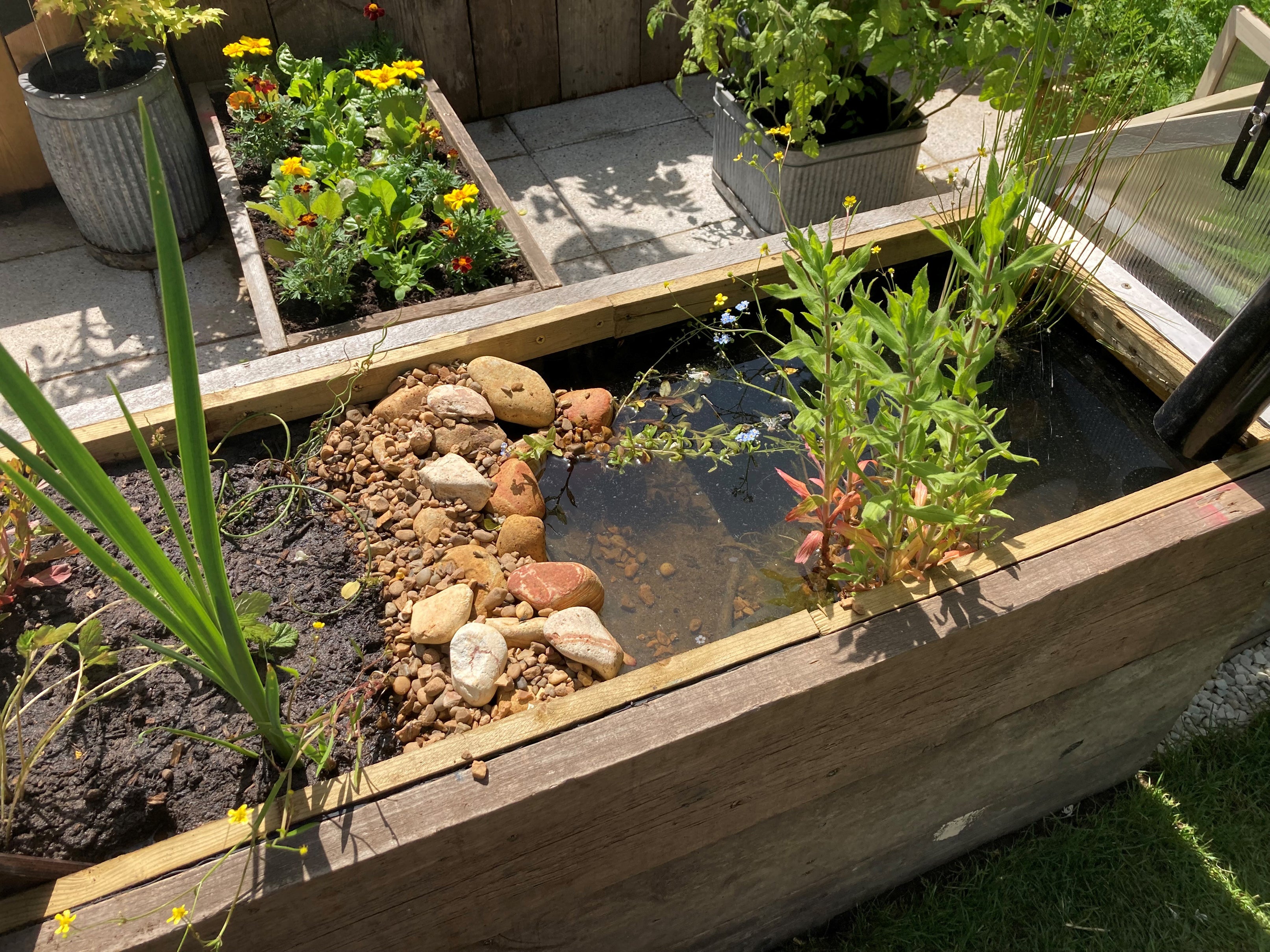
Garden designer Chris Collins knows only too well what it’s like gardening in a small space, given that his London home only offers him a balcony.
Yet he has created a beautiful haven on that balcony, attracting bees and butterflies, including flowers and edibles and creating a beautiful oasis away from the urban grime.
So at this year’s BBC Gardeners’ World Live event, Collins, head of organic horticulture at Garden Organic (gardenorganic.org.uk) and former Blue Peter gardener, was well qualified to co-design the charity’s Small Space Big Ideas show garden, a 5mx5m paved space which won a gold award for its innovative planting, biodiversity and use of recycled and homemade materials.
Many of the ideas can be adapted to your own garden setting, he insists.

Many city dwellers don’t have gardens, he notes. “As a gardener I’m always looking at tiny spaces and thinking how they should be gardened – but you need to give people do-able ideas.”
So in that small show garden space, he and Garden Organic’s head gardener Emma O’Neill created a pond, a small vegetable bed, bug hotels, a compost bay and vertical planting using recycled materials.
Here, he offers tips to gardeners as to how they can use those ideas in their own small outdoor space.
1. Hanging basket bug hotel

Use two metal hanging basket frames, filling them with an assortment of bits and pieces in which bugs can shelter, from pine cones and straw, to old bits of hessian, terracotta crocks, cardboard, bamboo and twigs. Then tie them together. If you haven’t any ground space, this can be easily suspended from above, but give insects the shelter they need, he says.
2. Gutter planting
Use old guttering to create a wall display containing herbs and flowers, just by cutting the guttering to the required length and attaching it to your wall. You can then fill it with compost and plant away. Collins recommends growing herbs such as basil, sage, rosemary, thyme, parsley, mint and coriander.
3. Comfrey feed
“Comfrey is the magic ingredient, the ultimate organic fertiliser,” he enthuses. It makes the most nutritious liquid feed when broken down, but if you let it decompose in a bucket you’ll end up a stinky stew, which isn’t great in a confined space.
So Garden Organic came up with the idea of making comfrey feed in a drainpipe. Secure a long piece of drainpipe vertically with a jam jar underneath and some mesh on the bottom of the drainpipe.

Then stuff the comfrey leaves into the top of the drainpipe, adding a weight to compress them, and before you know it you’ll have liquid feed seeping through the bottom of the drainpipe into the jam jar.
“I would put two to three capfuls in a five gallon watering can and feed the plants every two weeks. I do that on my balcony at home and get really good results. Comfrey is also a compost accelerator and a soil improver and is easy to grow in a pot. One plant will keep you going for a while.”
4. Mini pond

Build a small frame, fill it with a pond liner and you have the makings of a mini pond.
“You’d need to put an oxygenator plant such as elodea in to stop the pond going green and helps prevent a build-up of algae,” he advises. Adding ledges and gravel or small stones in strategic positions will help insects, frogs and other wildlife get in and out of the pond.
5. Raised bed
You can grow quite a lot, even in a small area, as the charity’s 1m x 1m vegetable bed in the show garden proved. To replicate this at home, you could use second hand scaffold boards or railway sleepers to create your frame. Section off your veg, growing lettuces, spring onions, carrots, beetroot and tomatoes, taking note of the smaller varieties and trailers if you want to save space.
“It’s about having a small place for busy people who may just want to graze. Put it into squares and then grow a different thing in each one. I have salad bars at home, growing salad in a trough and then I repeat sow in drills at intervals and I don’t go to the supermarket for salad for nine months of the year,” he says.
6. Upcycled furniture

The charity’s show garden featured an upcycled bookcase to display pots of geraniums and other plants, which was not so deep that it took up much floor space. Collins says: “If you have trellis, arches and upcycled furniture which you can use to display your plants, it just seems you create so much more space.”







